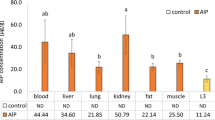Abstract
THE residential parts of Calcutta are remarkably free, as a rule, from both house-flies (Musca, spp.) and blue-bottles. This is doubtless due to the excellence of the municipal sanitary arrangements, for at Sibpur, a few miles away, blue-bottles (Pycnonoma or Lucilia dux) are not only extremely troublesome in the houses, but are also probably connected with frequent epidemics of enteric, unknown in the better parts of Calcutta. For some years past I have noticed in the compound of the Indian Museum that Pycnonoma from time to time becomes relatively numerous, and on several occasions I have been able to trace the flies to their breeding-ground. This has always been the dead bodies of the snail Achatina fulica, the largest land mollusc in Bengal.
This is a preview of subscription content, access via your institution
Access options
Subscribe to this journal
Receive 51 print issues and online access
$199.00 per year
only $3.90 per issue
Buy this article
- Purchase on Springer Link
- Instant access to full article PDF
Prices may be subject to local taxes which are calculated during checkout
Similar content being viewed by others

Author information
Authors and Affiliations
Rights and permissions
About this article
Cite this article
ANNANDALE, N. Mortality among Snails and the Appearance of Blue-bottle Flies. Nature 104, 412–413 (1919). https://doi.org/10.1038/104412d0
Issue Date:
DOI: https://doi.org/10.1038/104412d0
Comments
By submitting a comment you agree to abide by our Terms and Community Guidelines. If you find something abusive or that does not comply with our terms or guidelines please flag it as inappropriate.


